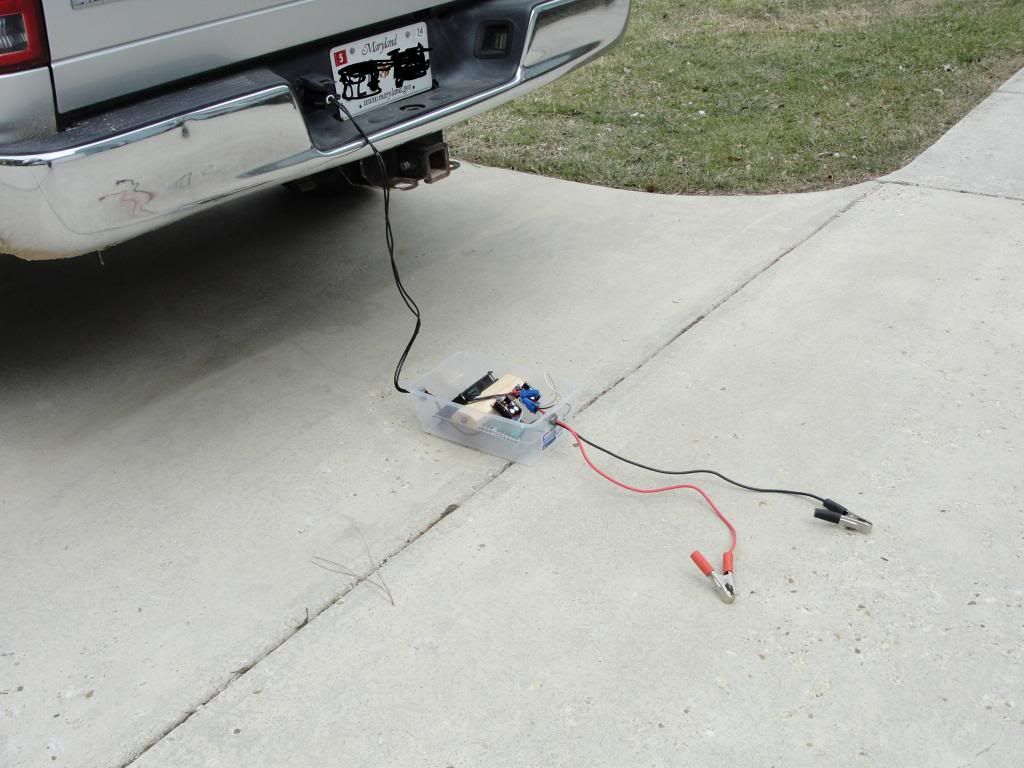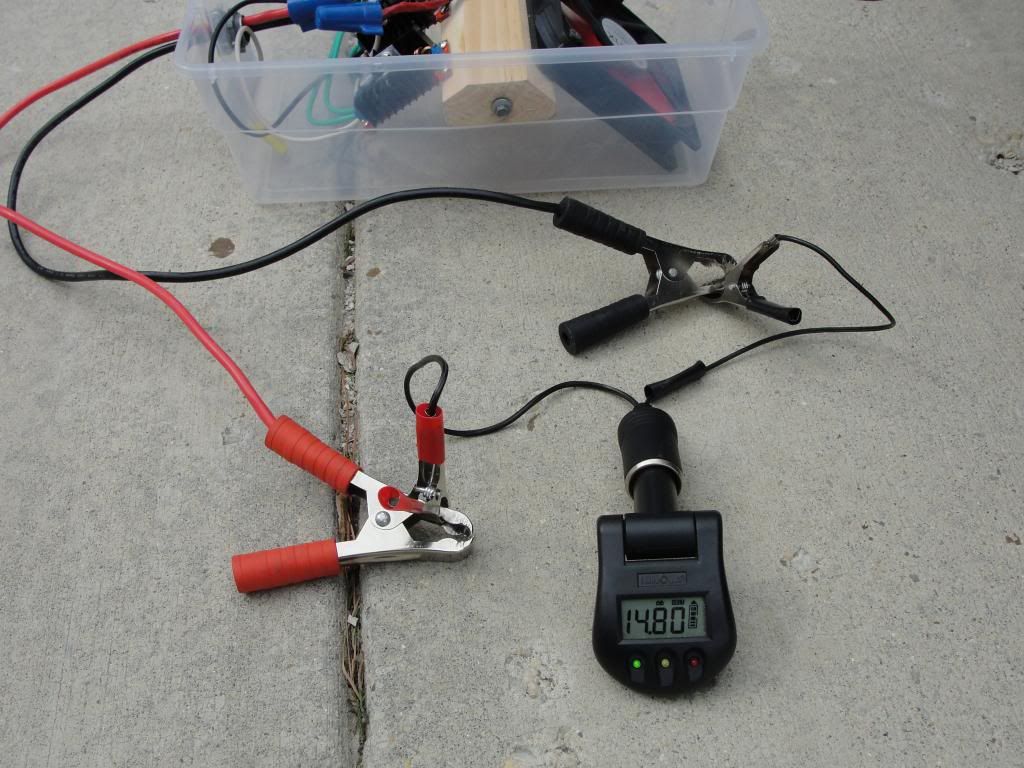eb145
Mar 16, 2014Explorer II
Home Made Voltage Booster charges TT battery off 7-pin
My TT batteries charge really slowly from my truck alternator through the standard 7-pin trailer wiring harness. This is due to the large voltage drop while current is flowing on the long thin battery charging wire from the truck alternator to the truck 7-pin socket. This is normal behavior for probably all STANDARD TT / TV combinations.
Some people have successfully run thicker wires on their truck from the alternator to the truck 7-pin socket (or even added a separate connector from TV to TT) to reduce voltage drop and increase TT battery charging rate.
I took a different approach that I can use when camping (not while driving). I built this DC-DC voltage booster out of two ebay DC-DC adjustable voltage boosters (about $6 each - wired in parallel to increase current and power throughput), a computer fan and a 7-pin RV plug.

The output voltage is adjustable with a screwdriver. I have it set to 14.8V right now. This picture was taken with the truck turned off so the voltage on the input side of the contraption is 12.6 while the output is 14.8.

If my solar panel can't keep up with my battery use after a few days of dry camping, I can use this to do some bulk charging Instead of a generator that would be used maybe 3 times a year (based on my current camping style).
Here are some closer pictures of the voltage booster:


Ed
Some people have successfully run thicker wires on their truck from the alternator to the truck 7-pin socket (or even added a separate connector from TV to TT) to reduce voltage drop and increase TT battery charging rate.
I took a different approach that I can use when camping (not while driving). I built this DC-DC voltage booster out of two ebay DC-DC adjustable voltage boosters (about $6 each - wired in parallel to increase current and power throughput), a computer fan and a 7-pin RV plug.

The output voltage is adjustable with a screwdriver. I have it set to 14.8V right now. This picture was taken with the truck turned off so the voltage on the input side of the contraption is 12.6 while the output is 14.8.

If my solar panel can't keep up with my battery use after a few days of dry camping, I can use this to do some bulk charging Instead of a generator that would be used maybe 3 times a year (based on my current camping style).
Here are some closer pictures of the voltage booster:


Ed